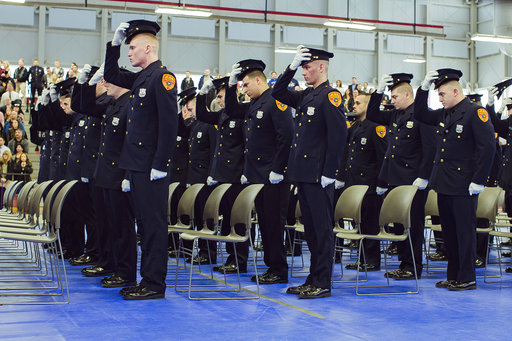In Kelley v. Johnson, 425 U.S. 238 (1976), the Supreme Court found that a county regulation limiting the length of county policemen’s hair did not violate the First or Fourteenth Amendment. As Justice William H. Rehnquist stated for the majority,“[T]he constitutional issue to be decided by these courts is whether petitioner’s determination that such regulations should be enacted is so irrational that it may be branded ‘arbitrary,’ and therefore a deprivation of respondent’s ‘liberty’ interest in freedom to choose his own hairstyle.”
Policeman claimed hair length guideline violated his free expression right
The grooming standards of New York’s Suffolk County Police Department established for its officers a specific style and length of hair, regulated sideburns and mustaches, banned beards and goatees, but allowed wigs for cosmetic reasons. The debated policy stated: “Hair will not touch the ears or the collar except closely cut hair on the back of the neck.” The police department contended that uniformity of appearance contributed to officer safety and advanced the department’s esprit de corps. However, the respondent policeman claimed that the police department’s guidelines violated his right of free expression under the First Amendment and his liberty interests under the Fourteenth Amendment.
Court said regulation was not arbitrary or unconstitutional
The majority of the Court rejected these arguments. The justices weighed the degree of infringement and the need for the regulation and determined whether the application of the policy to a uniformed police force would be a significant intrusion into personal liberty. In its ruling, the Court majority noted that state and federal employers could impose considerable restrictions on their employees that could not be imposed on citizens outside that employment context. The Court concluded that the respondent failed to show the regulation was so irrational that it was arbitrary and unconstitutional.
In his dissent, Justice Thurgood Marshall stated: “If little can be found in past cases of this Court or indeed in the Nation’s history on the specific issue of a citizen’s right to choose his own personal appearance, it is only because the right has been so clear as to be beyond question.” He further argued that the rationales given for the department’s regulations did not justify this one particular restriction on appearance, as many other potential differences in appearance were still allowed under the regulations.
This article was originally published in 2009. Kristy Rothebuhler was a student at Muskingum University. Walter Huber is a Professor and Chair of the Department of Political Science and Criminal Justice at Muskingum University. He serves as the Director of the University’s Center for Regional Planning and Development.

